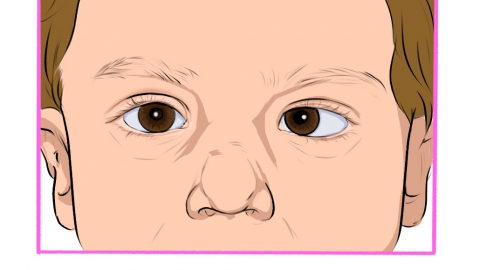How to Correct Strabismus in Children
Generally, childhood strabismus may be caused by imbalanced development of the extraocular muscles, uncorrected refractive errors, congenital cataracts, viral keratitis, or ocular trauma. It is recommended to seek timely medical attention, identify the underlying cause, and then improve the condition under a physician's guidance through general treatments, medication, surgical interventions, and other approaches. A detailed analysis is as follows:

1. Imbalanced Development of Extraocular Muscles: Unequal strength or abnormal attachment points of the congenital extraocular muscles can lead to uncoordinated eye movement and strabismus, which is often congenital. If the degree of strabismus is small, it can be corrected by wearing prisms; when the degree is large, extraocular muscle adjustment surgery is required to adjust the length or attachment point of the muscles, restoring the eyes to their normal position.
2. Uncorrected Refractive Errors: Failure to correct myopia, hyperopia, or astigmatism in a timely manner can result in unclear vision in both eyes. Long-term use of only one eye may lead to strabismus, commonly seen in children with high hyperopia. Prompt refraction and glasses prescription are necessary to correct refractive errors, along with binocular vision training, such as alternate occlusion or synoptophore training, to develop coordinated binocular vision.
3. Congenital Cataracts: Lens opacity blocks light entry, impairs visual development, and causes strabismus, often accompanied by low vision. Cataract removal via phacoemulsification combined with intraocular lens implantation is required to clear the cloudy lens and implant an artificial lens. After surgery, corrective glasses should be worn, and amblyopia therapy conducted to improve both strabismus and vision.
4. Viral Keratitis: Viral infection causes corneal inflammation, leading to corneal scarring that affects vision and eye movement, inducing strabismus, often accompanied by eye pain and photophobia. Patients should use antiviral medications such as acyclovir eye drops, ganciclovir ophthalmic gel, and recombinant human interferon α2b eye drops as directed by a physician. After controlling the inflammation, the strabismus should be evaluated, and glasses or surgical correction considered if necessary.
5. Ocular Trauma: Eye injuries such as impact or contusion can damage the extraocular muscles or nerves, causing eye movement disorders, resulting in strabismus accompanied by swelling and pain. If there is a ruptured extraocular muscle, surgical repair (muscle suturing) is necessary to restore muscle function, followed by eye movement training postoperatively to aid recovery from strabismus.
In daily life, it is important to supervise children in developing good eye habits, avoiding prolonged near work, and undergoing regular vision check-ups for early detection and intervention. Encourage children to engage in outdoor activities and look into the distance to relax their eyes, promoting binocular vision development and maintaining ocular health.









